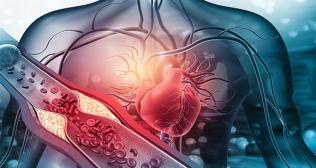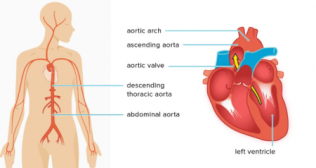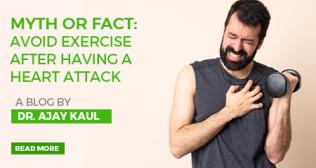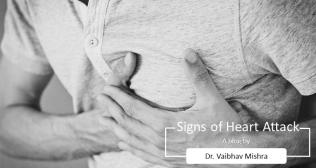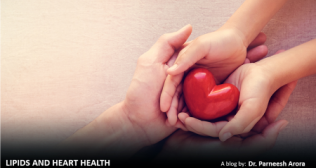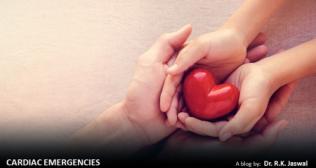
PAD Surgery: How its done?
Peripheral artery disease (PAD) is a condition in which the arteries that provide blood to the limbs constrict or block as a result of plaque formation, which is most usually caused by atherosclerosis. Patients who were on conservative treatment such as medications, lifestyle modifications and minimally invasive surgical techniques like angioplasty, who couldn’t achieve complete remission may require surgical interventions to ensure restoration of normal blood supply. PAD surgeries aim in removing or creating a bypass in arteries to improve blood mobility and reduce long-term risks such as limb ischemia and limb amputation in severe cases. Additionally, surgical interventions also enhance quality of life and prevent disability. Bypass surgery, endarterectomy, thromboendarterectomy, atherectomy are few surgical techniques employed in treating PAD.
Surgical Options for PAD:
Surgical options to treat PAD are several, most of which are tailored according to patient needs, severity of artery blockade and location of occluded artery. Surgical options include –
Bypass Surgery:
Bypass surgery is one of the renowned surgical techniques for treating PAD. This technique is often employed when the block in major arteries of legs or arms are significant to be treated by surgeries and cannot my managed medically or by minimal invasive techniques. Here the surgeon creates an alternative path for blood to pass round the blocked/narrowed segment of artery.
How is it done?
The surgeon attaches a healthy blood vessel, usually a vein from the patient's own leg (or a synthetic graft if necessary), above and below the occluded artery. This "bypass" redirects blood flow, allowing oxygenated blood to reach the tissues located beneath the obstruction.
Bypass surgery can take several hours. Surgery is dependent on number of blockages and the complexity of rerouting.
Endarterectomy:
Endarterectomy is the preferred surgical technique when the blockage is in the carotid or femoral arteries. This surgery directly removes the plaque from these artery walls to re-ensure better blood supply.
How is it done?
Here the surgeon creates an incision in the artery of choice (affected artery) and removes plaque. After removal, the artery is stitched and reinforced to widen the vessel and improve blood supply.
This technique is especially advantageous for patients who have severe plaque buildup in their major arteries, and it has been demonstrated to lower the risk of stroke or limb amputation when performed in the carotid or femoral arteries.
Thromboendarterectomy:
This is a specialized form of endarterectomy, and is performed when both blood clot and plaque cause blockage in arteries.
How is it done?
This surgery combines plaque removal and clot extraction, utilising a procedure similar to a normal endarterectomy but with a greater emphasis on eliminating clot material.
This is the preferred surgical intervention for those with significant plaque build-up in major arteries and these surgeries are shown to reduce risk of stroke or amputation when done in carotid or femoral arteries.
Atherectomy:
Atherectomy is yet another minimally invasive surgical procedure which incorporates plaque removal from the arteries equipped with a rotating blade or laser. This is the surgical technique of choice when blockages are too hard or calcified to perform angioplasty.
How is it done?
In this technique, catheter is inserted with a cutting device into the affected artery. The rotating blade or laser cutes the plaque and this plaque is removed via the catheter.
Preoperative Procedures:
Patients undergoing PAD surgery should undergo several preparatory steps to ensure the best outcomes. They are –
- Diagnostic: Angiography, Duplex Ultrasound, or Magnetic Resource Angiography to map the exact location and severity of the blockages.
- Complete medical profile of patients which include previous surgeries, past or current medications, underlying diseases etc.
- Pre-Surgery Instructions: Patients may be instructed to halt on certain medications especially blood thinners. They are expected to follow nothing per oral 12 hours before surgery.
Post-Operative Care and Recovery:
- Wound care – Utmost care must be given to the surgical incision and patient/attenders must ensure that the site is clean and dry and also must refrain from giving strain to region of surgery during recovery.
- Physiotherapy – Following surgery, physiotherapy is frequently needed to increase mobility, develop strength, and guarantee adequate healing. Walking activities are very beneficial for improving circulation to the legs.
- Follow -Up Appointments – Regular follow-up visits will be required to monitor recovery, check for complications, and assess the success of the surgery.
Risks and Complications:
PAD surgery, like any other surgical operation, is not devoid risks. These include infection, bleeding, blood clots, and anaesthesia problems. More serious effects, such as a stroke, heart attack, or kidney problems, are uncommon but possible, particularly in patients with several underlying health conditions.
Conclusion:
Surgical interventions play crucial role in treating PAD by restoring blood flow especially in individuals with severe peripheral artery disease. These surgical procedures can be impactful to alleviate pain, improve mobility and minimise the risk for amputation or other profound complications. Advancements in surgical techniques and patient-precise treatment approaches can be impactful in achieving promising results. Besides successful surgery, managing PAD also involves regular follow-ups, life-style changes, and medication adherence is vital for good prognosis. Thus the above discussed surgical interventions can pave pathway enabling patients to ensure remission and improved mobility.
Popular Searches :
Hospitals: Cancer Hospital in Delhi | Best Heart Hospital in Delhi | Hospital in Amritsar | Hospital in Ludhiana | Hospitals in Mohali | Hospital in Faridabad | Hospitals in Gurgaon | Best Hospital in Jaipur | Hospitals in Greater Noida | Hospitals in Noida | Best Kidney Hospital in Kolkata | Best Hospital in Kolkata | Hospitals in Rajajinagar Bangalore | Hospitals in Richmond Road Bangalore | Hospitals in Nagarbhavi Bangalore | Hospital in Kalyan West | Hospitals in Mulund | Best Hospital in India | | Cardiology Hospital in India | Best Cancer Hospital in India | Best Cardiology Hospital in India | Best Oncology Hospital In India | Best Cancer Hospital in Delhi | Best Liver Transplant Hospital in India
Doctors: Dr. Rana Patir | Dr. Rajesh Benny | Dr. Rahul Bhargava | Dr. Jayant Arora | Dr. Anoop Misra | Dr. Manu Tiwari | Dr. Praveer Agarwal | Dr. Arup Ratan Dutta | Dr. Meenakshi Ahuja | Dr. Anoop Jhurani | Dr. Shivaji Basu | Dr. Subhash Jangid | Dr. Atul Mathur | Dr. Gurinder Bedi | Dr. Monika Wadhawan | Dr. Debasis Datta | Dr. Shrinivas Narayan | Dr. Praveen Gupta | Dr. Nitin Jha | Dr. Raghu Nagaraj | Dr. Ashok Seth | Dr. Sandeep Vaishya | Dr. Atul Mishra | Dr. Z S Meharwal | Dr. Ajay Bhalla | Dr. Atul Kumar Mittal | Dr. Arvind Kumar Khurana | Dr. Narayan Hulse | Dr. Samir Parikh | Dr. Amit Javed | Dr. Narayan Banerjee | Dr. Bimlesh Dhar Pandey | Dr. Arghya Chattopadhyay | Dr. G.R. Vijay Kumar | Dr Ashok Gupta | Dr. Gourdas Choudhuri | Dr. Sushrut Singh | Dr. N.C. Krishnamani | Dr. Atampreet Singh | Dr. Vivek Jawali | Dr. Sanjeev Gulati | Dr. Amite Pankaj Aggarwal | Dr. Ajay Kaul | Dr. Sunita Varma | Dr. Manoj Kumar Goel | Dr. R Muralidharan | Dr. Sushmita Roychowdhury | Dr. T.S. MAHANT | Dr. UDIPTA RAY | Dr. Aparna Jaswal | Dr. Ravul Jindal | Dr. Savyasachi Saxena | Dr. Ajay Kumar Kriplani | Dr. Nitesh Rohatgi | Dr. Anupam Jindal |
Specialties: Heart Lung Transplant | Orthopedic | Cardiology Interventional | Obstetrics & Gynaecology | Onco Radiation | Neurosurgery | Interventional Cardiology | Gastroenterologist in Jaipur | Neuro Physician | Gynecologist in Kolkata | Best Neurologist in India | Liver Transfer








